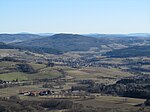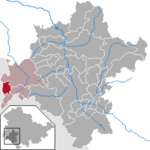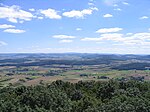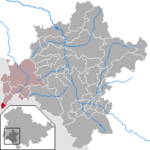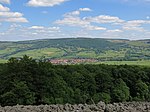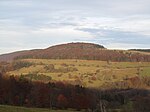The Black Moor (German: Schwarzes Moor) is an important internationally recognised wetland located in the Bavarian Rhön Mountains at the tripoint of the German states of Hesse, Thuringia and Bavaria. It is part of UNESCO's Rhön Biosphere Reserve and has an area of 66.4 hectares. It is thus the largest bog complex in the Rhön. Much of the moor is a largely undisturbed and intact raised bog. It is part of the Europe-wide conservation system, Natura 2000, and one of the most important raised bogs in Central Europe. The Black Moor lies on the watershed between the Rhine and Weser rivers. In 2007 the Black Moor was included in the List of the 100 most beautiful geotopes in Bavaria.
The Black Moor is an eccentric, cupola-shaped, raised bog. Its surface appearance resembles that of the northern kermi bogs. From its central plateau which lies near the higher edge of the bog in the north, where the peat is up to 8 metres thick in places, the surface of the terrain falls away on all sides. The central plateau forms an almost rectangular area with a length of about 800 metres from northwest to southeast and a width of about 400 metres. On the steepest slopes there are hollows running parallel to the contours: elongated, sharply defined troughs known as flarks (Schlenken). These are up to 50 metres long and between one and three metres deep.


